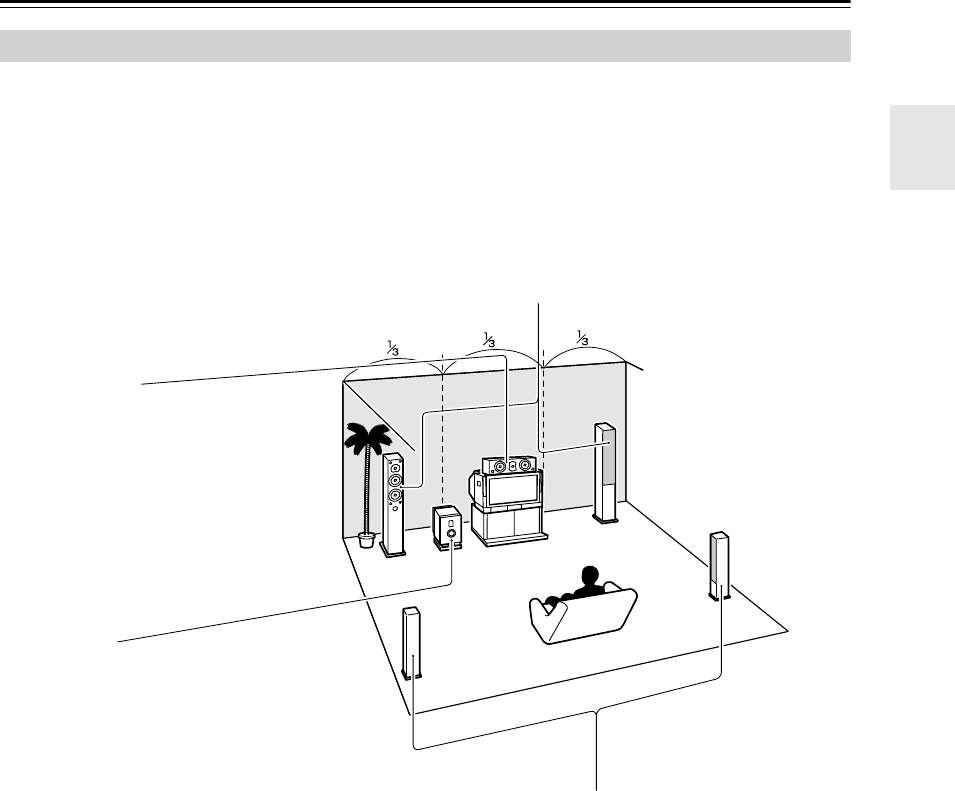
19
About Home Theater
Thanks to the AV receiver’s superb capabilities, you can enjoy surround sound with a real sense of movement in your
own home—just like being in a movie theater or concert hall. With DVDs you can enjoy DTS and Dolby Digital. With
analog and digital TV you can enjoy Dolby Pro Logic II or Onkyo’s own DSP surround listening modes.
Enjoying Home Theater
Front left and right speakers
These output the overall sound. Their role in a home theater is to provide a solid
anchor for the sound image. They should be positioned facing the listener at about
ear level, and equidistant from the TV. Angle them inward so as to create a triangle,
with the listener at the apex.
Center speaker
This speaker enhances the front left and
right speakers, making sound movements
distinct and providing a full sound image. In
movies it’s used mainly for dialog.
Position it close to your TV (preferably on
top) facing forward at about ear level, or at
the same height as the front left and right
speakers.
Subwoofer
The subwoofer handles the bass sounds of the
LFE (Low-Frequency Effects) channel. The vol-
ume and quality of the bass output from your
subwoofer will depend on its position, the shape
of your listening room, and your listening posi-
tion. In general, a good bass sound can be
obtained by installing the subwoofer in a front
corner, or at one-third the width of the wall, as
shown.
Tip: To find the best position for your subwoofer,
while playing a movie or some music with good
bass, experiment by placing your subwoofer at
various positions within the room, and choose
the one that provides the most satisfying
results.
Surround left and right
speakers
These speakers are used for
precise sound positioning and
to add realistic ambience.
Position them at the sides of
the listener, or slightly behind,
about 2–3 feet (60–100 cm)
above ear level. Ideally they
should be equidistant from the
listener.


















